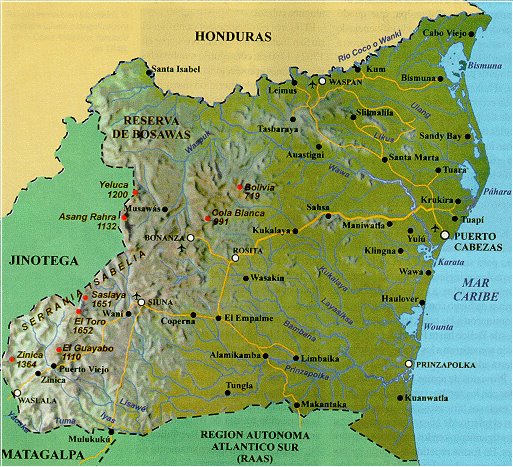
The El Paso Times on Oct. 28 noted that Ortega is warning of the possibility of disease and on Oct. 29 the Times-Union reported that a waterborne disease called Leptospirosis has spread through animal urine has killed nine people and sickened more than 1,600 in storm-stricken Nicaragua, health officials said Monday.
The New Security Beat blog has a good summary posting called An (Un)Natural Disaster in Nicaragua dated Oct. 26.
The United Nations response to flood victims is detailed in an Oct. 25 release.
NicaNet on Oct. 23 quotes officials from SINAPRED (the Nicaraguan Disaster Relief Management Agency) with the following damage from heavy rains in October: In summary, damages during the last 47 days are as follows: 216,000 people (37,287 families) directly affected, 109 dead and 135 missing, 22,000 houses partially or totally destroyed, 150 public buildings (schools, health centers and churches) destroyed, 255,000 acres of crops lost, 45,000 cattle lost, 1.7 million acres of forest destroyed, 9 bridges destroyed and 1,864 miles of road damaged.
ClimateArk on Oct. 24 writes about the hurricane and heavy October rains and the impact on crops and the Nicaraguan economy in an essay entitled Of Forests, Floods, Fatalities and Famine. “This is worse than Mitch,” says President Ortega, referring to the 1998 hurricane.
The United Nations response to flood victims is detailed in an Oct. 25 release.
NicaNet on Oct. 23 quotes officials from SINAPRED (the Nicaraguan Disaster Relief Management Agency) with the following damage from heavy rains in October: In summary, damages during the last 47 days are as follows: 216,000 people (37,287 families) directly affected, 109 dead and 135 missing, 22,000 houses partially or totally destroyed, 150 public buildings (schools, health centers and churches) destroyed, 255,000 acres of crops lost, 45,000 cattle lost, 1.7 million acres of forest destroyed, 9 bridges destroyed and 1,864 miles of road damaged.
ClimateArk on Oct. 24 writes about the hurricane and heavy October rains and the impact on crops and the Nicaraguan economy in an essay entitled Of Forests, Floods, Fatalities and Famine. “This is worse than Mitch,” says President Ortega, referring to the 1998 hurricane.




